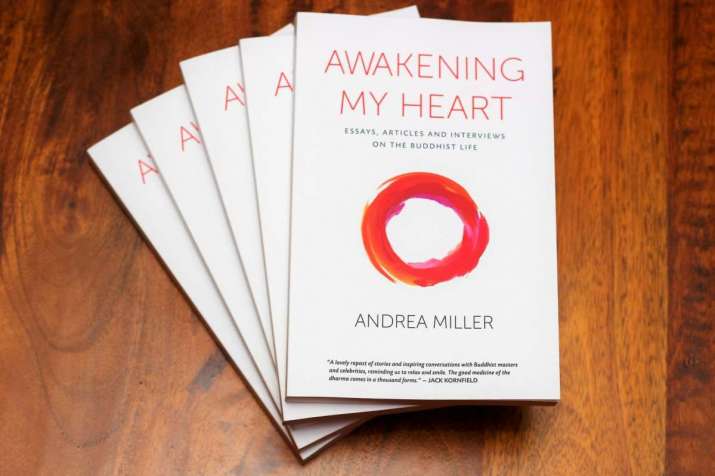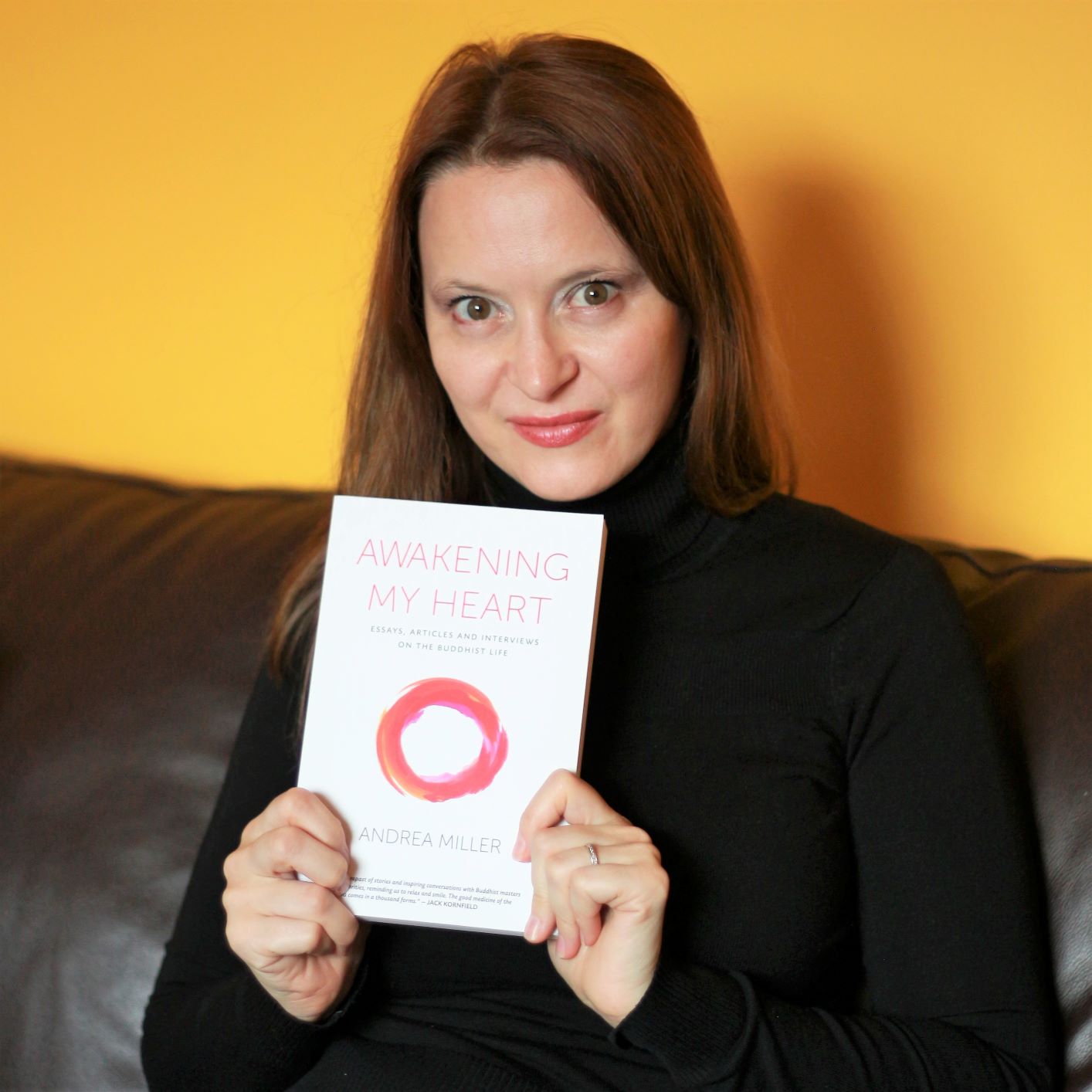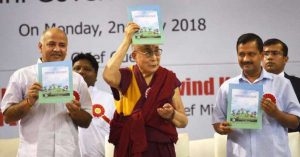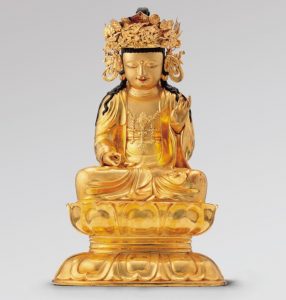
The Lion’s Roar website and its print magazine are known across the world of Western Buddhism and beyond for their quality content and coverage of Buddhist affairs. The magazine, specifically, owes its excellence to its editorial staff, among them my friend Andrea Miller, who is the deputy editor. She recently published a collection of selected essays called Awakening My Heart (2019), which has garnered very favorable reviews from other respected Buddhist writers such as Shozan Jack Haubner, and the editor of Mindful magazine, Barry Boyce.
Andrea’s anthology is not gimmicky. Awakening My Heart is, at its core, a simple compilation of her essays over a period of experience and immersion in the world of Buddhism and religion journalism. It is straightforward about its purpose: to articulate the path of a practitioner who has found in the Dharma a spiritual message that speaks to her in a meaningful way. It is lucid, down-to-earth, and eloquent. Many of us in the same line of work (which many religion journalists would describe as overlapping spheres of their spiritual and professional lives) will instantly identify and sympathize with Andrea’s incredibly broad scope of focus, since that is what religion trains the journalist to do (or journalism trains the religious person to do)—to take an interest in literature, culture, people, and events, and how all things in the world “inter-be” to form a grand cosmic story, endless beings and worlds observed by the bodhisattvas.
As a book constructed of a “harmony” or “conversation” of many smaller arguments and reflections, it follows the well-trod and timeless path of many an essayist, from A. C. Grayling to perhaps even Montaigne. The essays therefore come in different formats and styles, from book reviews to feature interviews to direct Q&A; I recognize this variety of presentation reflected in my own work. However, it is also the content itself (from fiction novelists and birds, to travel and social justice in the United States) that is strikingly diverse. I admire this quality deeply. A broad repertoire of interests for the religion reporter, for me, is what truly makes an “engaged Buddhist”: regardless of one’s political alignment, a basic love of listening to and telling human (and non-human) stories is the bedrock of engaged Buddhism as well as authentic journalism.
In a twist, the first essay I quite unintentionally flipped to was “The Buddha Was Here: On Pilgrimage in India,” which is about Andrea’s trip to several Indian Buddhist sites in 2018. I know this because I was there with her, among other delegates. It was a whirlwind of a trip, over merely a few days, but her essay outlines quite vividly how those short days were crammed with unique experiences. Some of them are, at face value, wildly disconnected from each other (guided meditation by our friend Shantum Seth, art, soft diplomacy with the Indian government, and ancient Buddhist lore) but actually interwoven tightly in a single piece. For example, in these excerpts from the same piece, she organizes an array of different concepts, sights and sounds, and religious reflections into a compact and beautiful essay:

We’re given an exuberant, flower-filled welcome and herded onto eight buses festooned with marigold garlands, long-stemmed red roses, and ribbons. Driving to Bodhgaya, the buses stick together as if they are a train. A police escort leads us, and children wave as we pass by. . . . (41)
As I wander Sarnath, I linger near the Dhamek Stupa, feeling small next to its girth of more than ninety feet. From a distance, it looks unornamented but up close I can see that it’s delicately chiseled with floral and geometric designs, human figures, and even geese. Geese, I’m told, symbolize the sangha because they’re birds that live in community, taking turns leading and caring for each other. . . . (45)
When we go to these Buddhist pilgrimage sites, we gain new insight into the Buddha’s teachings because we have a deeper understanding of his life and circumstances. Despite all the cars, cellphones, and skyscrapers, you can still connect with the India the Buddha lived in 2,600 years ago. Village life is cut from same ancient cloth, and you can meet a modern-day Sujata, serving something sweet and energizing. The rivers and caves you read about in the sutras are still there, too. Farmers still plow their fields behind water buffalo the same way they did in the Buddha’s time. (46)
Not all of her articles, of course, follow the same method, but as highlighted already, there is enough diversity within this anthology for all reading tastes.
Despite the essayist tradition’s reputation for being slightly outdated, I believe it is grossly underappreciated as a writing discipline. It is in a catch-22 position in today’s information age: too long and not attention-grabbing enough for a Tweet, yet too short to buy on Kindle or sell in a bookstore. The hard truth is that it takes many years to compile a worthy collection of experiences and thoughts that can be distilled into an essay series stretching across time and space. Put bluntly, such a book can only be written when someone has a decent amount of meaningful things worth sharing. Happily, Awakening My Heart is very much one of these collections in which many valuable insights from Andrea should be shared with the Buddhist community and beyond.
Awakening My Heart is published by Pottersfield Press, Lawrencetown Beach, Nova Scotia, Canada.












